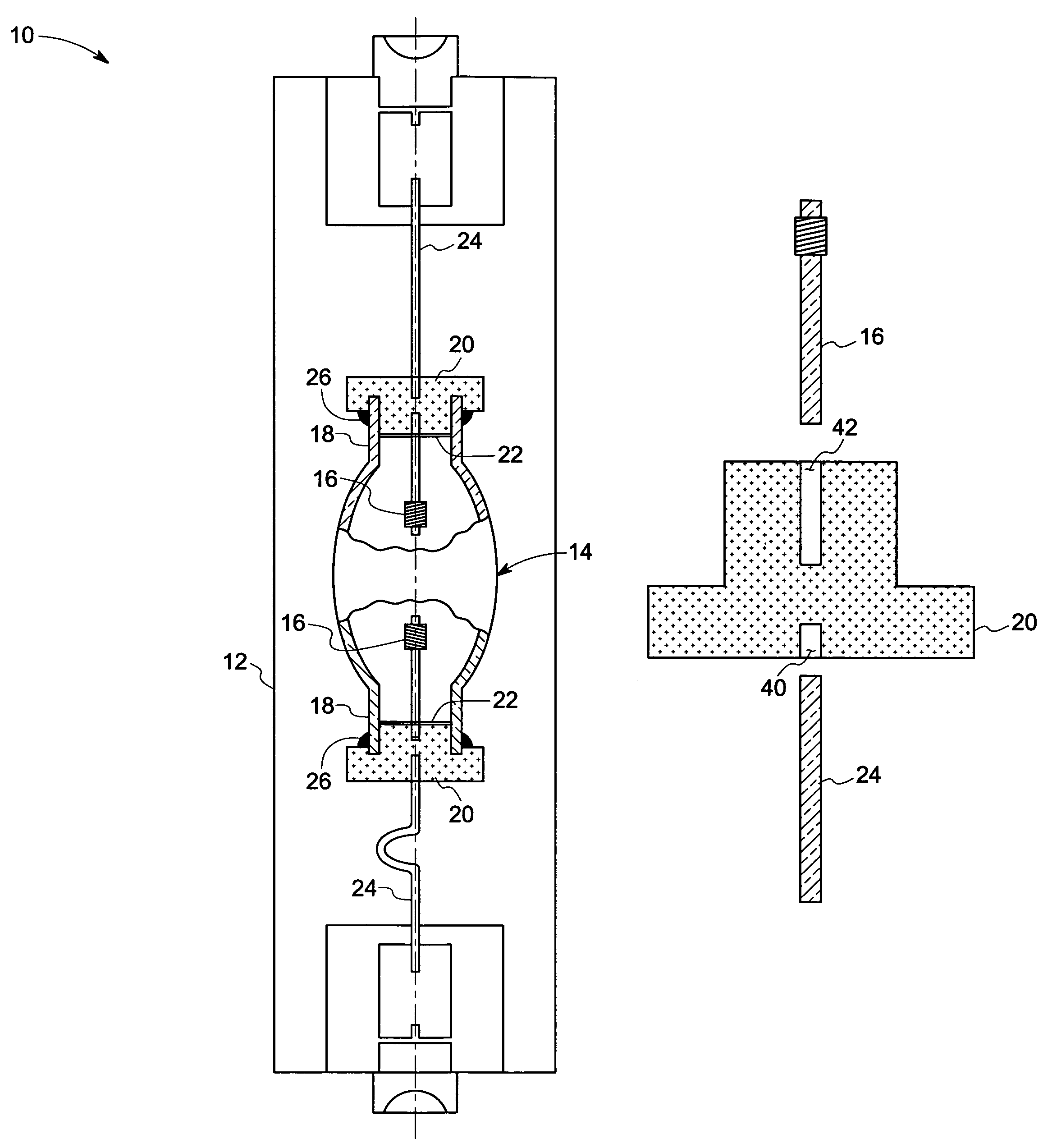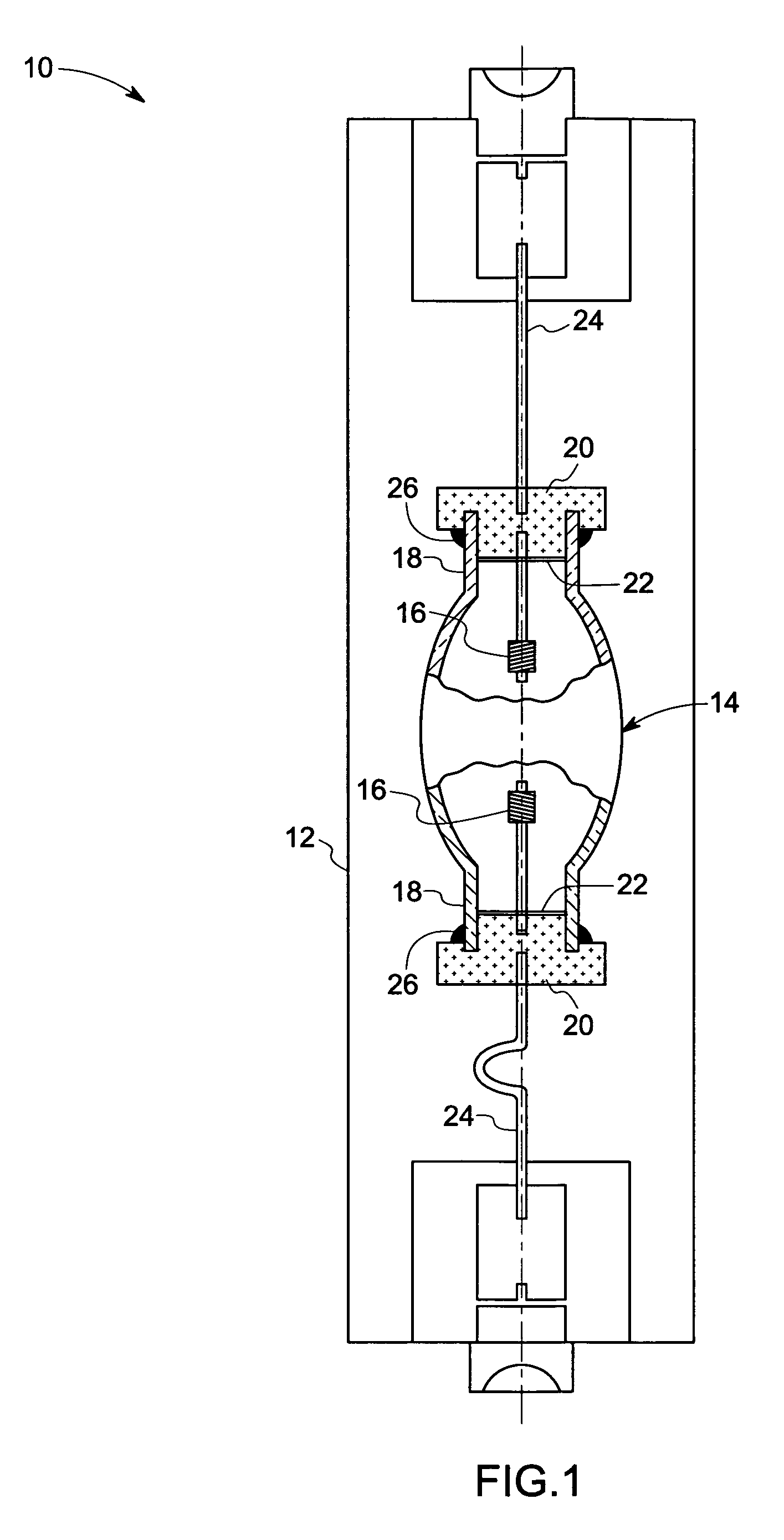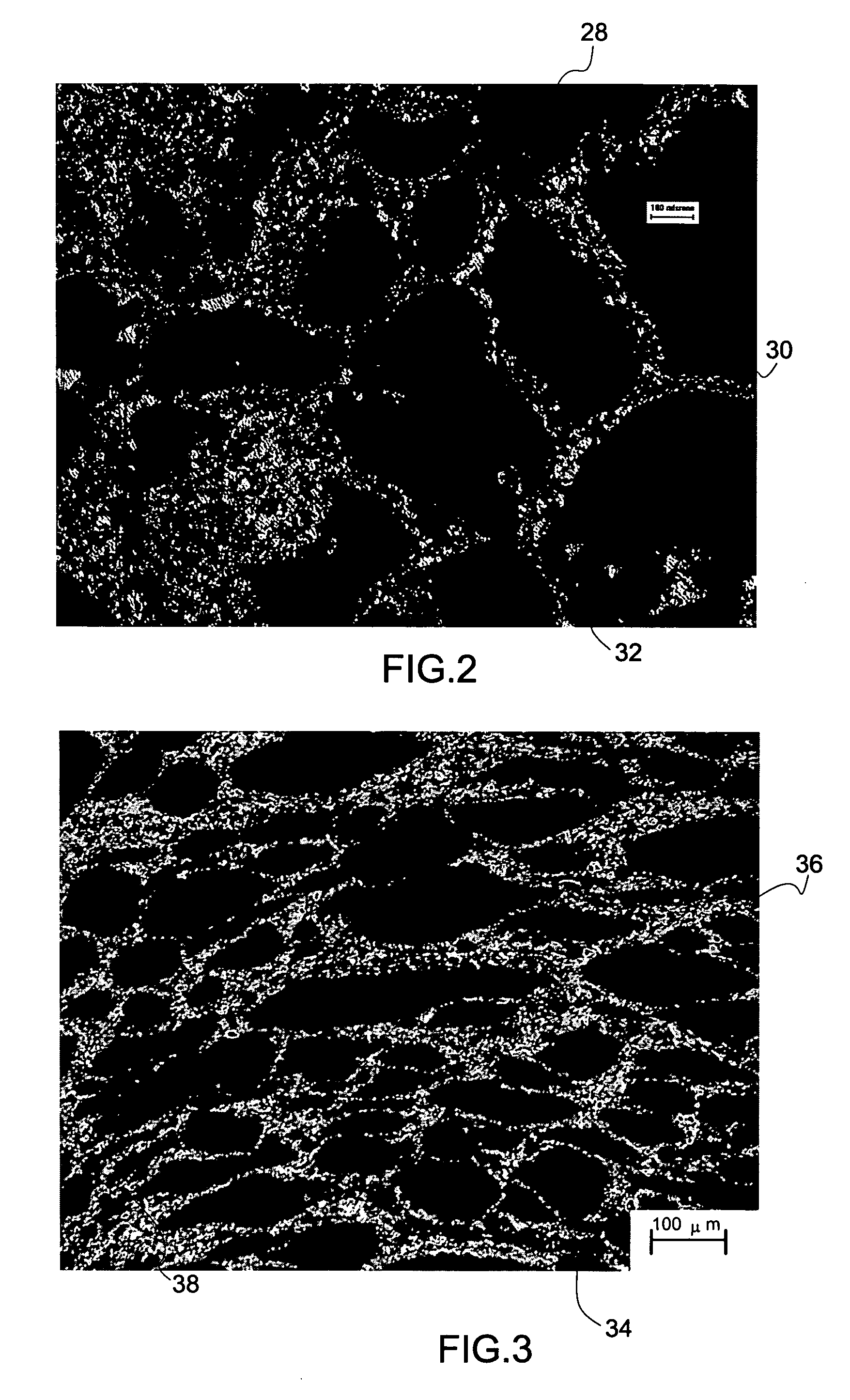Electrically conductive cermet and devices made thereof
a cermet and electrically conductive technology, applied in the direction of discharge tube luminescnet screens, gas-filled discharge tubes, transportation and packaging, etc., can solve the problems of dissimilar materials bonding in high-temperature lamps, thermal stresses and cracks that develop, and the flexibility of cermets to tailor the coefficient of thermal expansion
- Summary
- Abstract
- Description
- Claims
- Application Information
AI Technical Summary
Benefits of technology
Problems solved by technology
Method used
Image
Examples
example 1
[0036]A batch of 45 grams of the alumina molybdenum cermet having 8 volume percent or about 8.91 grams of molybdenum was prepared. An amount of 36.13 grams of alumina powder obtained from Alcoa was used as the refractory oxide material. Molybdenum powder obtained from Alcoa was used as the transition element. Alumina powder was sieved to remove any fines below 105 micrometers size. Calculated amount of alumina powder was then weighed and transferred to plastic bottle, and kept for milling without any grinding media. Milling was done for about 20 minutes. Care was taken to minimize the exposure of the milled alumina powder to air and moisture.
[0037]Molybdenum powder was screened through a 105 micrometers mesh, all the large granules were discarded and small particles were selected. An amount of 8.91 grams of molybdenum powder was then weighed. After this, alumina was poured into a glass or stainless steel tray and mixed with molybdenum powder by means of stirring rod, but care was ta...
PUM
| Property | Measurement | Unit |
|---|---|---|
| size | aaaaa | aaaaa |
| size | aaaaa | aaaaa |
| operating temperatures | aaaaa | aaaaa |
Abstract
Description
Claims
Application Information
 Login to View More
Login to View More - R&D
- Intellectual Property
- Life Sciences
- Materials
- Tech Scout
- Unparalleled Data Quality
- Higher Quality Content
- 60% Fewer Hallucinations
Browse by: Latest US Patents, China's latest patents, Technical Efficacy Thesaurus, Application Domain, Technology Topic, Popular Technical Reports.
© 2025 PatSnap. All rights reserved.Legal|Privacy policy|Modern Slavery Act Transparency Statement|Sitemap|About US| Contact US: help@patsnap.com



